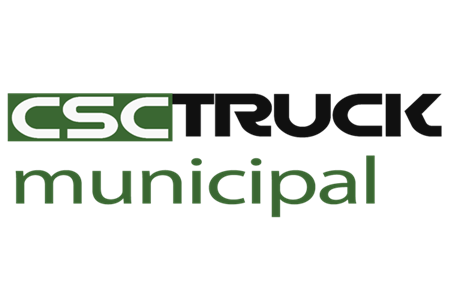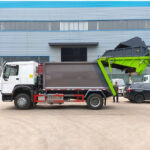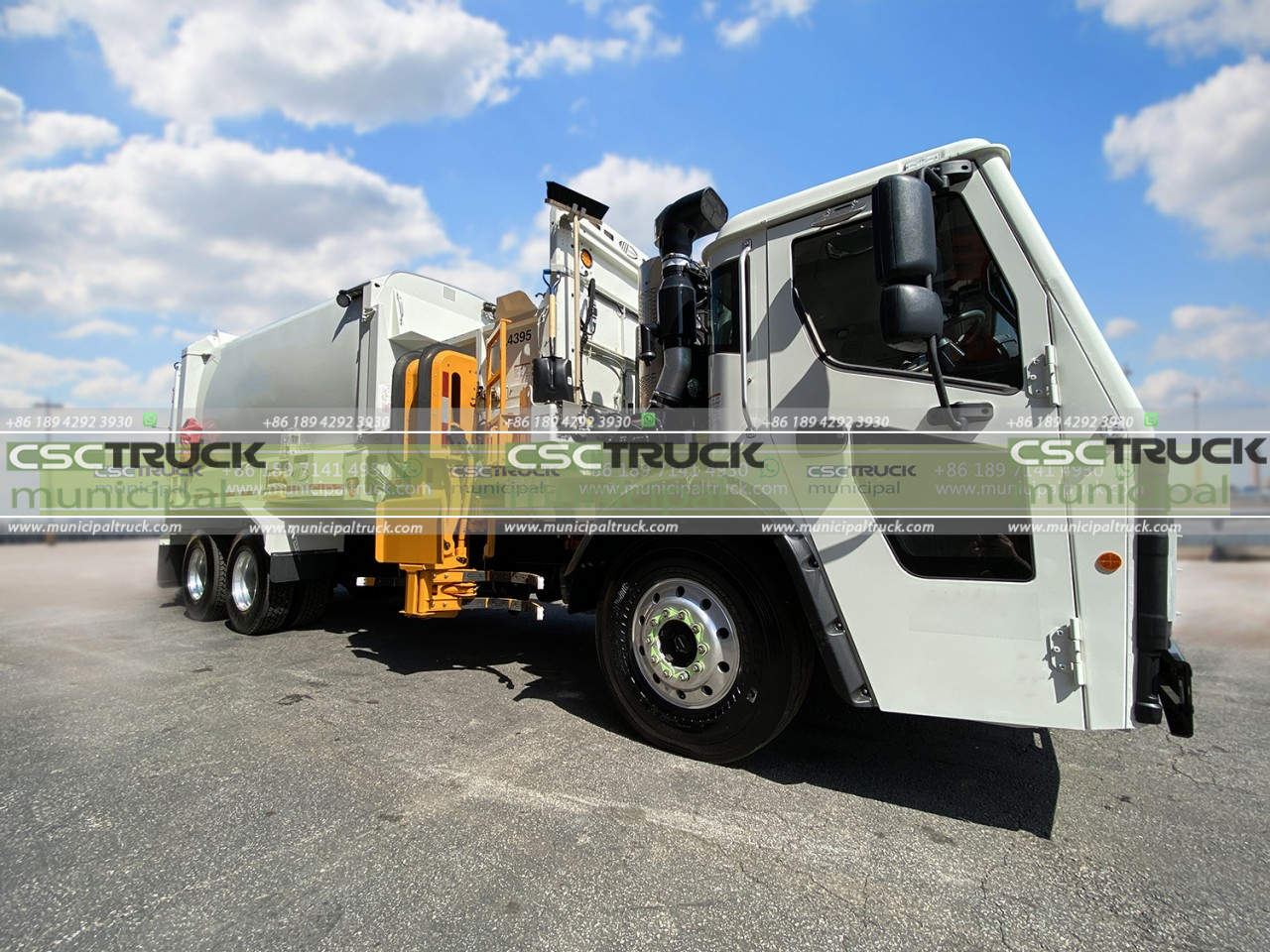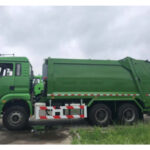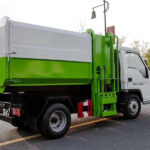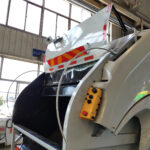The Anatomy of Efficiency – Core Design Principles of Rear Loader Systems
The rear loader garbage truck operates on a deceptively simple mechanical premise: a hydraulically powered hopper combined with a sweep-and-compact blade system that achieves 4:1 waste compression ratios. Unlike side loader garbage trucks requiring precise alignment with standardized bins or compactor garbage trucks designed for high-volume commercial routes, rear loaders thrive in the unpredictable terrain of residential collection. Their open-body design accommodates everything from overflowing 96-gallon carts to loose yard waste bags, while the rear-mounted packer blade exerts 12,000–18,000 pounds of vertical force to stabilize shifting loads. This brute-force engineering proves critical in neighborhoods with irregular pickup schedules or mixed waste streams, where a single truck might process 8 tons of material across 700 stops daily without load shift incidents.
Urban Terrain Mastery – Navigating Constrained Residential Infrastructure
Low-Clearance Corridor Operations
In historic districts with narrow lanes (under 24ft width) and overhanging tree canopies, rear loader garbage trucks demonstrate unparalleled maneuverability. Their rear-loading configuration allows operators to collect waste from curbside piles without entering traffic lanes—a critical advantage in Philadelphia’s Society Hill neighborhood, where 1930s-era alleys prohibit side loader garbage trucks from deploying their robotic arms. The truck’s 180° rear visibility via quad-camera systems enables safe reversing at 2–5 mph speeds, addressing one of residential waste collection’s most persistent safety challenges.
Steep Grade Performance
San Francisco’s 31% incline streets test waste vehicles’ limits, but rear loaders’ rear-wheel-drive configurations and 450hp diesel engines maintain traction where front-loading systems fail. The weight distribution from rear-mounted compactors creates ideal 60/40 front/rear axle loading for hill ascents, while automatic load-sensing hydraulics prevent fluid starvation during prolonged climbs.
Service Flexibility – Adapting to Diverse Residential Waste Streams
Mixed Waste Handling Capabilities
Unlike compactor garbage trucks optimized for homogeneous commercial waste, rear loaders excel at processing unpredictable residential material mixes:
- Bulky items like broken furniture wedged between recycling bins
- Leaf bags contaminated with garden hose segments
- Overflowing trash from multi-family dwellings lacking standardized containers
Portland’s Bureau of Planning and Sustainability recorded a 41% reduction in missed pickups after replacing side loaders with rear loaders in mixed-density zones, citing the trucks’ ability to handle overfilled bins without spillage.
Seasonal Waste Surge Management
Post-holiday collection cycles demand vehicles capable of processing 300% volume spikes. Rear loaders’ open-body design allows rapid manual loading of excess waste bags during Christmas tree disposal periods or post-storm debris collection, bypassing the containerization requirements that bottleneck automated systems.
Cost Dynamics – Lifecycle Economics for Municipal Budgets
| Cost Factor | Rear Loader Truck | Side Loader Alternative |
|---|---|---|
| Crew Size | 2 (Driver + Swamper) | 1 (Robotic arm operator) |
| Annual Maintenance | 18,000–25,000 | 32,000–40,000 |
| Service Life | 12–15 years | 8–10 years |
| Training Time | 40 hours | 120 hours (automation systems) |
The rear loader garbage truck achieves operational parity through labor flexibility—cities like Austin deploy temporary seasonal workers during peak periods without investing in robotic arm certification. Their mechanical simplicity also reduces downtime; a 2024 Waste Age study found rear loaders average 92% uptime versus 78% for automated side loaders due to fewer sensor failures.
Future-Proofing Neighborhood Collection – Integration with Smart City Ecosystems
Modern rear loaders are evolving beyond brute-force waste carriers into data-generating municipal trucks:
Payload Analytics Integration
New models embed load-cell sensors and AI-powered cameras to:
- Identify contamination in recycling streams via real-time image recognition
- Quantify food waste percentages for municipal composting audits
- Detect hazardous materials through thermal imaging and gas sensors
Route Optimization Synergies
When integrated with smart city traffic systems, rear loaders dynamically adjust collection routes based on:
- Real-time parking availability from municipal dashboards
- Instant accident reports from connected vehicle networks
- Weather-predicted waste generation models (e.g., heatwave-driven water bottle surges)
The Chicago Department of Streets’ 2024 pilot reduced idling time by 19% by syncing rear loader GPS data with adaptive traffic signals, proving that even analog workhorses can participate in digital infrastructure revolutions.
As municipalities balance rising service expectations against climate-driven budget pressures, the rear loader garbage truck emerges not as a relic of waste management’s past, but as a versatile platform bridging manual flexibility with smart city innovation—a testament to mechanical durability in an increasingly automated world.
